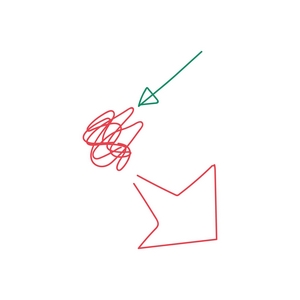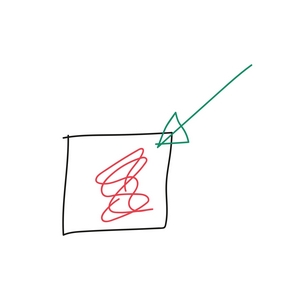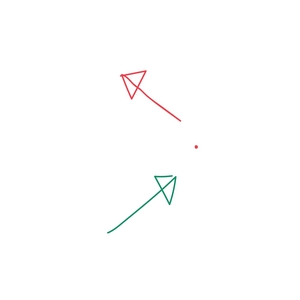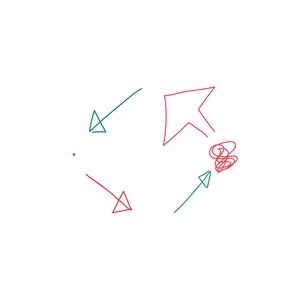Blog #20
In general, individuals who have not finished responding (see unfinished business) to an earlier threat in life are left with baggage in their nervous system. This either speeds them up or slows them down, leading to them over- or under-reacting to new stimuli in life, which we sometimes call triggers if they lead to one of these out-of-scale reactions. Sometimes, however, we get it just right, and so we have three basic ways of reacting to a stimulus, or trigger. We can draw these three different ways of reacting as three different diagrams like below. The red squiggle represents your baggage, the green arrow is a trigger, and the red arrow is your output, or reaction.
Overreaction:

Under-reaction: (In this diagram, the box represents little to no reaction, where the energy is instead internalised.)

Just right, or Goldilocks reaction:

If we go with the idea that any one person can be represented by any one of these diagrams, then we can begin to build a picture of the kinds of relationships we have in life. These can be romantic relationships, or any type of relationship; family, friends, colleagues. We sometimes find that the dynamics discussed here are most noticeable or extreme in romantic relationships, so that’s a good focus to illustrate the points, but the analysis works for everyone.
If you have three kinds of people, then you can have six kinds of relationships.
Goldilocks with an Over-reaction
I want you to imagine the people represented in the diagram above standing next to each other. In this example we are going to take one over-reacting person and place them next to a person with a Goldilocks response. Then I want you to imagine that you are going to turn them into an animated cartoon. What happens to those arrows? How would the cartoon develop over time? What would get bigger and what would get smaller?

As before, the triggers and reactions will start to get bigger and bigger in this circle if the two people stay together, although this will now happen less quickly than if both nervous systems were dysregulated. Each time you go around the loop, the over-reaction from one side escalates the situation. Eventually, even a well-regulated nervous system is overwhelmed. At this point, the well-regulated nervous system would start to move away in order to stay regulated.
So, if the person on the left moves to the left, to get away from the overwhelm from the person on the right, how do you think the person on the right would respond to that? They start to chase after them of course. After all, it’s no fun having an over-reaction on your own. In fact, over-reactors typically need someone else to project their reaction onto, otherwise they have to feel all that unpleasant activation on their own. They need an emotional dustbin. So, the better regulated person leaves, with the out-of-control person pursuing them.
Does this remind you of anyone?
You can see this relationship all over social media, for instance. One person will make a reasonable point about anything from global warming, to which is the best biscuit to have with a cup of tea, and someone else will go completely bonkers. The first person then calmly restates their point and leaves the conversation. The out of control person typically then gets the last word in, with escalating rage, insults and capital letters.
Anonymous exchanges are good illustrations of this because they are uninhibited by real-life contact. In our daily lives, a similar dynamic exists in our relationships. They might be less extreme, but the pattern is the same. When this dynamic repeats over and over again, the person who is trying to get some distance might end up staying away for good. This is often how families get estranged or how romantic relationships end. People want to stay connected for all sorts of reasons, but they just can’t take the over-reactions anymore. Eventually, they fade away or give up.
And the person on the left might, in fact, be an imposter; someone with a dysregulated nervous system who’s just good at boundaries and containment, so they look like someone who gets it just right. This might be harder for them than it looks because in order to stay that way, they might have had to move away from this relationship which was too overwhelming.
It is understandable, but this is an opportunity missed. The less well-regulated person could learn a lot and feel safer if they were able to stay in this relationship, but, to do that, they would have to modify their behaviour. This is where boundaries and containment come to the rescue.
You can download this post in a handy 2-page PDF to print and share with friends, family, clients or colleagues. Follow this link to download now.
You can buy a copy of The Invisible Lion now on kindle or paperback from your local Amazon store. Just click here to buy now.


